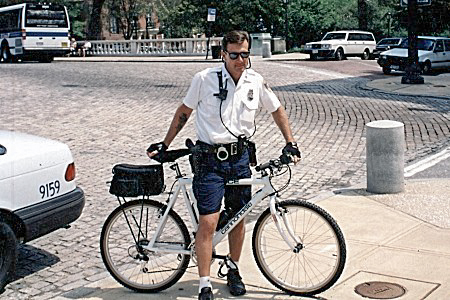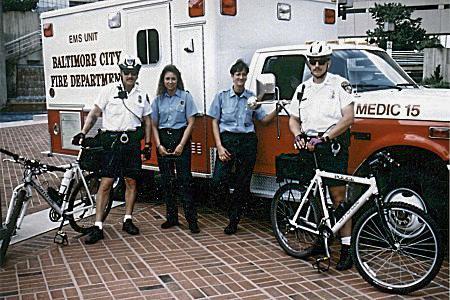Bicycle Patrol
Baltimore Police have had Bicycle Patrol Units off and on since the late 1800s early 1900s
 29 Jun 1896
29 Jun 1896
![]()
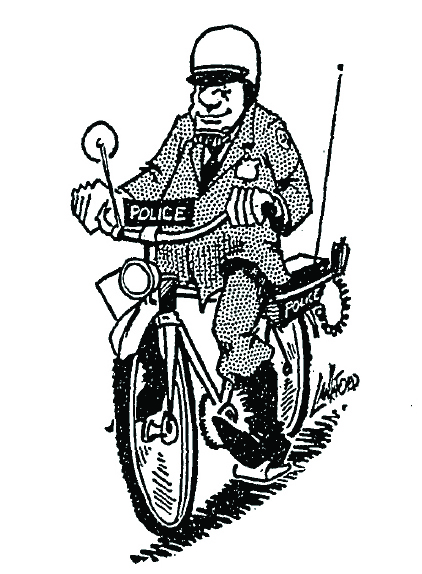
1915 – 1917
16 February 1915
Cycles Squad on Duty
Police booth system in operation in the suburbs, ready to answer her a call in service from 4 o’clock in the afternoon until 8 o’clock in the morning. Making their quarters in this connected by telephones, the 60 members of the bicycle squad in which was recently inaugurated by the police board, when into duty yesterday. Eight of them left the northern police station at 4 o’clock in the afternoon after the entire squad was given instructions by Marshall Carter, Debbie Marshall house of DC Amidon, president of the police board. The squad is divided into two platoons, one reporting on duty at 4 o’clock in the afternoon any other at midnight to relieve to Damon. No platoon will do patrol duties between 8 o’clock in the morning and 4 o’clock in the afternoon. Four booths have been established by the police department, a K St. and Sinclair Ln., University Parkway and Merryman Ln., Woodberry and Parklake Avenue and the Walbrook Junction of the nine a railways and electric company. There will always be a policeman in the booths, making for so detailed every two hours, while the other four are on patrol duty. After touring his post for two hours, the bicycled policeman will return to the booth and relieve the man who has been there in his absence. The latter will then do the two-hour patrol duty, returning and relieving his associate.
The idea of the newest cycle’s squad is to give the residents of the outlying sections of the city, generally known as the Annex, better police protection. When the resident wants a policeman in the case of an emergency. He should telephone the police station nearest his home for aid the telephone clerk there will get in a media type of telephone with the cycle policeman at one of the booths and he will be dispatched to respond to the summons for police help. There will be a police telephone at the booth at University Parkway and Merryman Ln., Homewood 3504 and that Walbrook Junction Walbrook 342.
The Policeman Detailed to the Cycle Squad
The policeman assigned to bicycle duty are George Ehmling, William Callahan, Daniel Cunningham, William a Smith, Howard T Collins, William C Lederer, Joseph Kotmair, August Bierman, who will work from midnight until 8 o’clock in the morning and Glenda the Dell, Michael diesel, John Harmon, John T Gordon, Andrew Simpson, Herbert McGee, Nelson R Coleman and Joseph Cole.
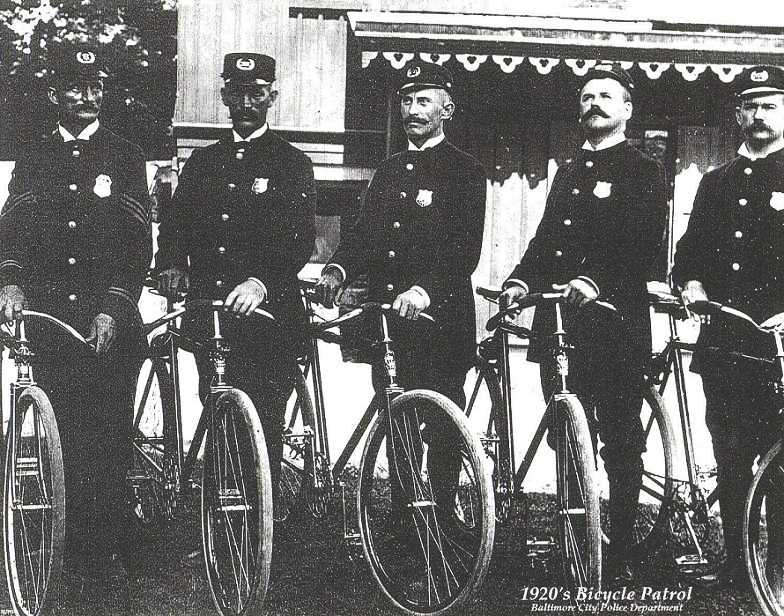
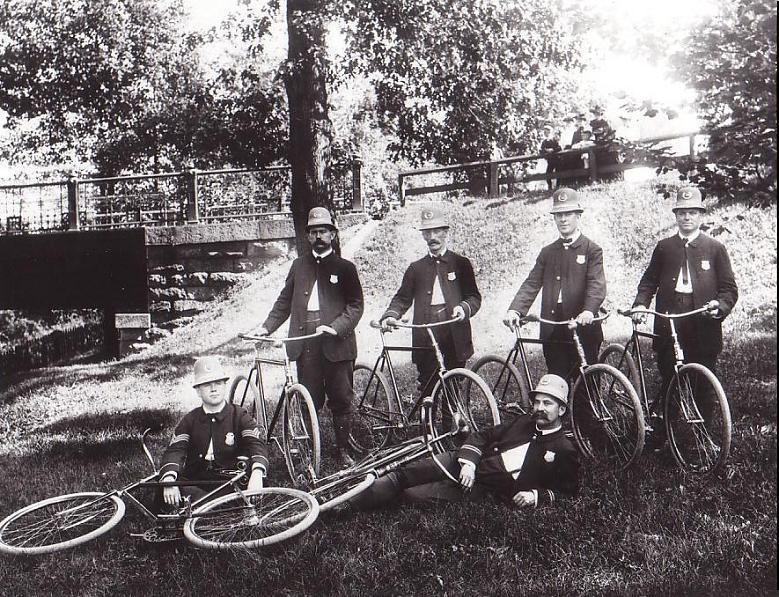
![]()
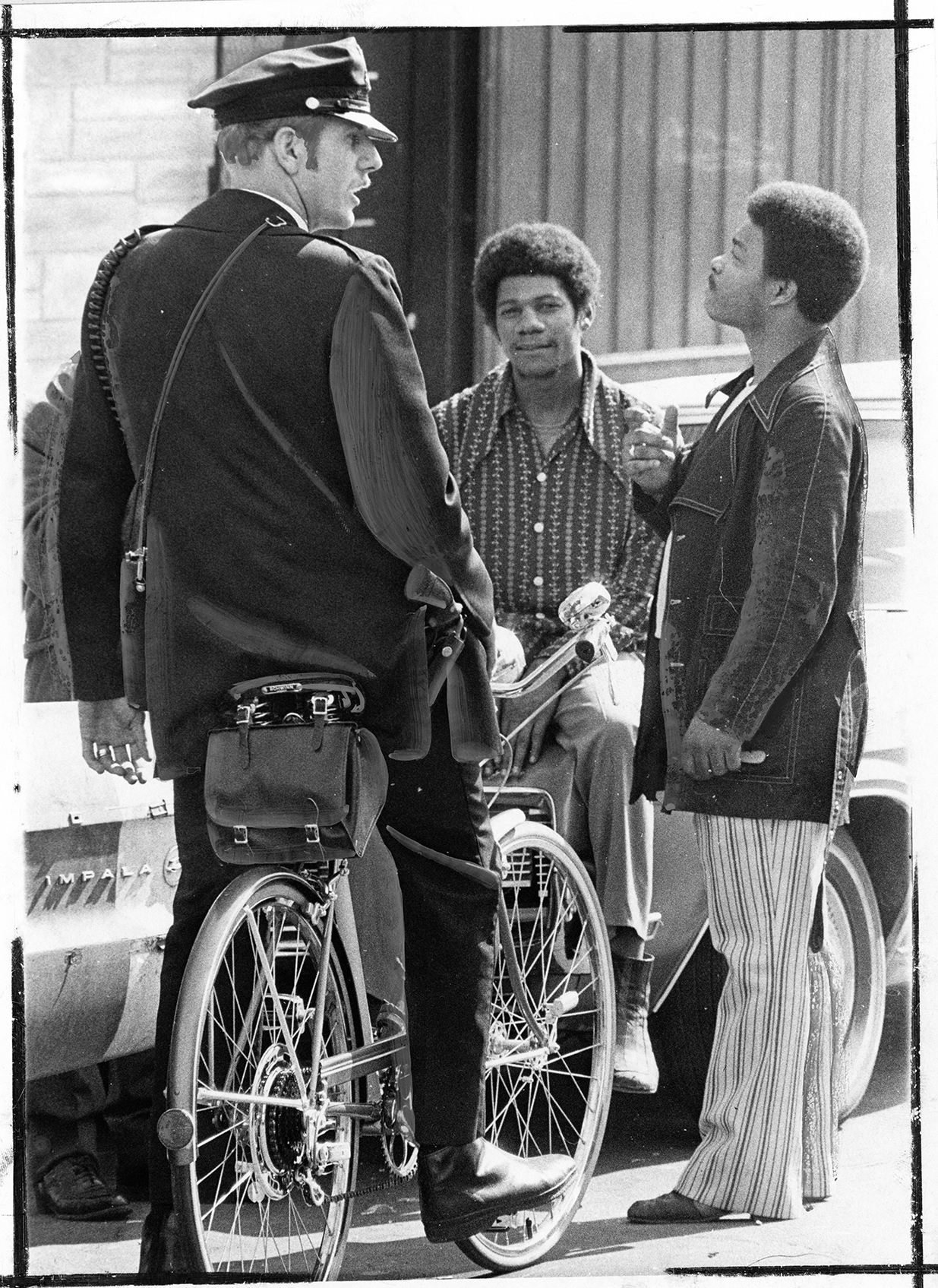
1971 – 1974
26 Dec 1971
Blimey! Cops on Bikes
A bike-riding Baltimore Bobby? Maybe so, if Lieut. Colonel Donald T. Shanahan is able to accomplish his goal of “moving forward” by going back. On a police force that in recent years has greatly emphasized the importance of motorized patrol cars, Lt. Colonel. Shanahan, chief of patrol, has issued a call for volunteers for a new police bicycle unit, a manner of law enforcement more akin to the British way of doing things. “In the interest of moving forward, we're contemplating using bicycles in normal patrol procedures,” he said. This concept is not new, the Col. Said and has been used “effectively” in Europe for many years. If the idea comes to fruition, bicycles would have joined a department that already employed cars, horses, motor scooters, and occasionally feet.
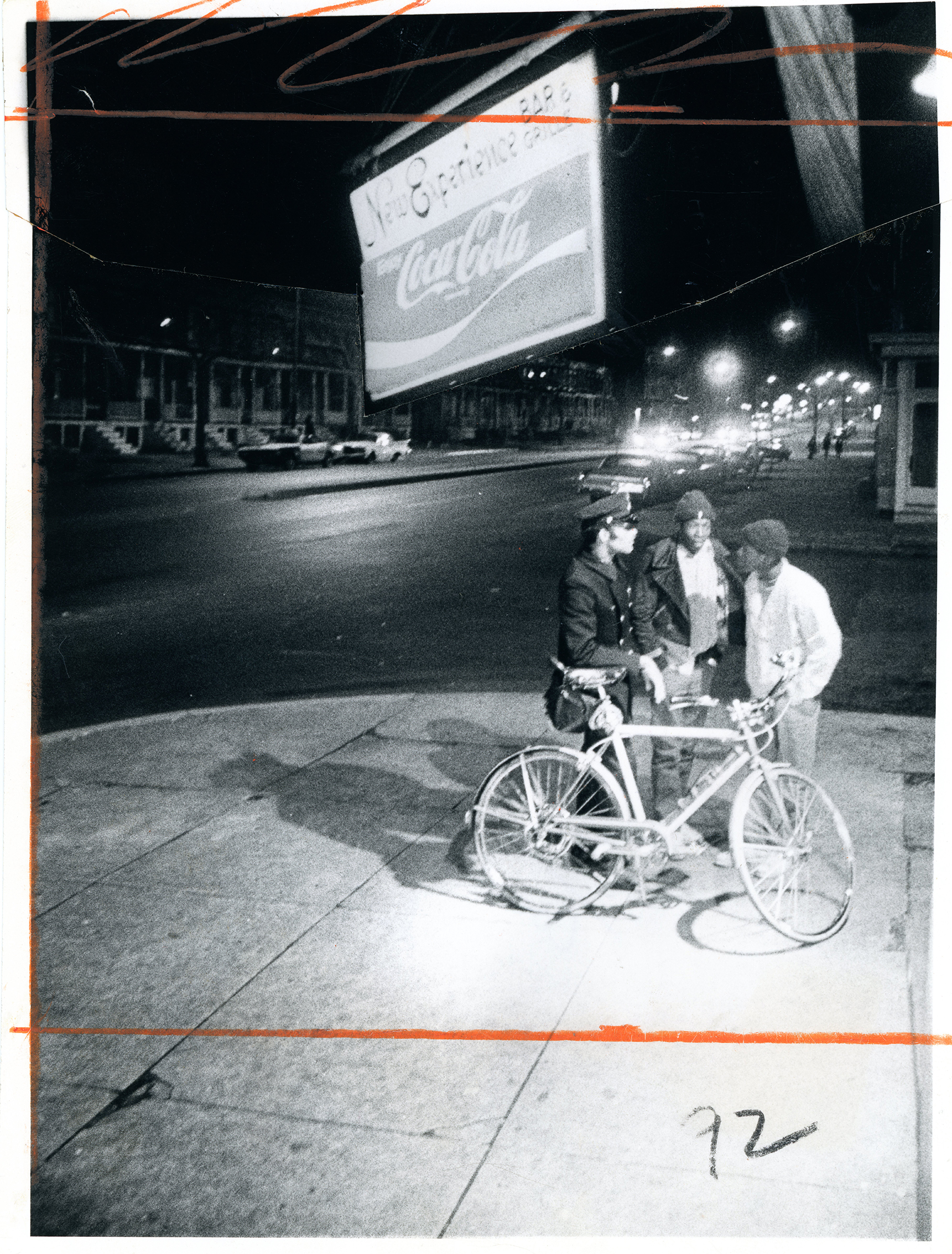
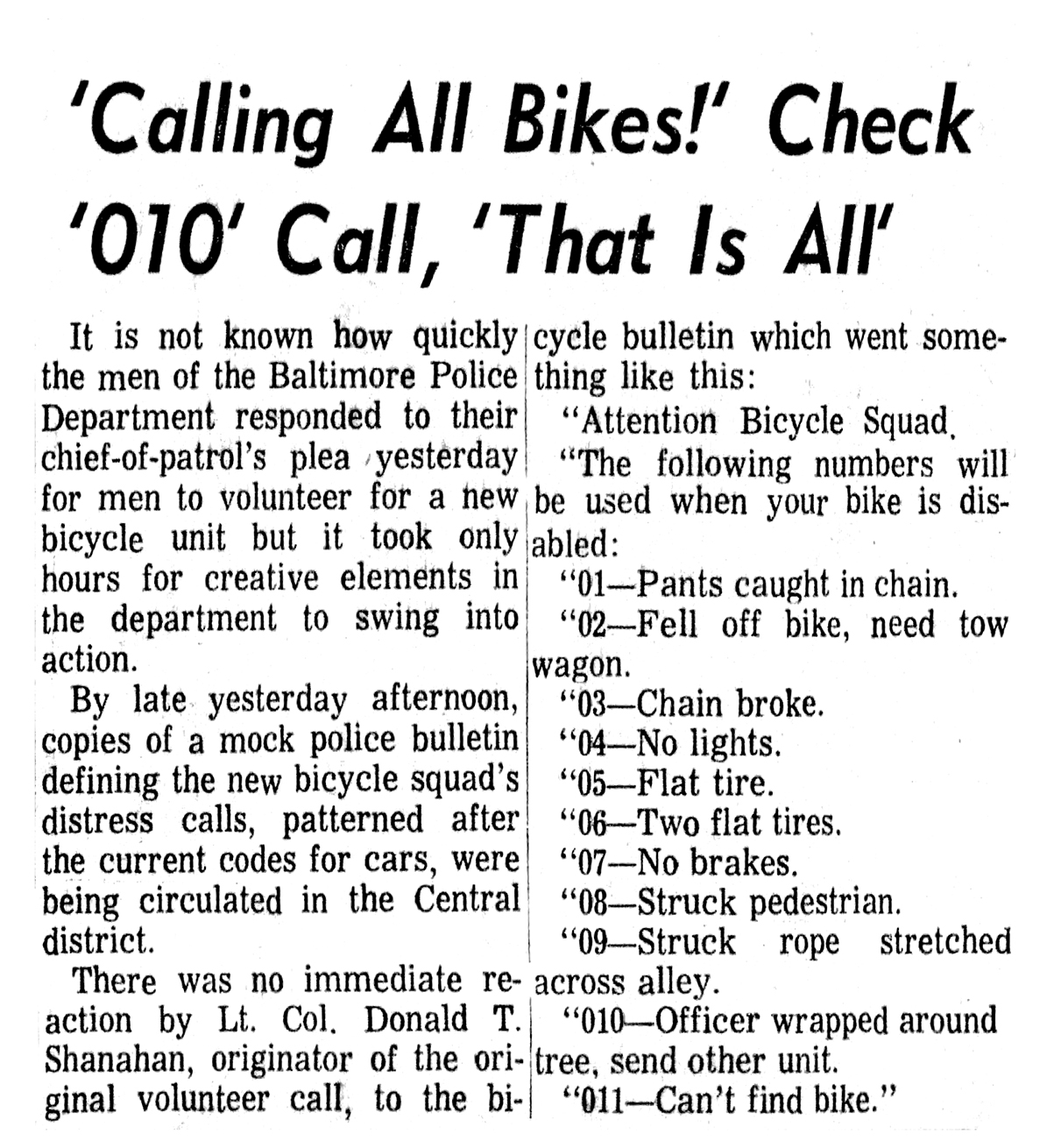

Baltimore Police Bike Squad Bikes
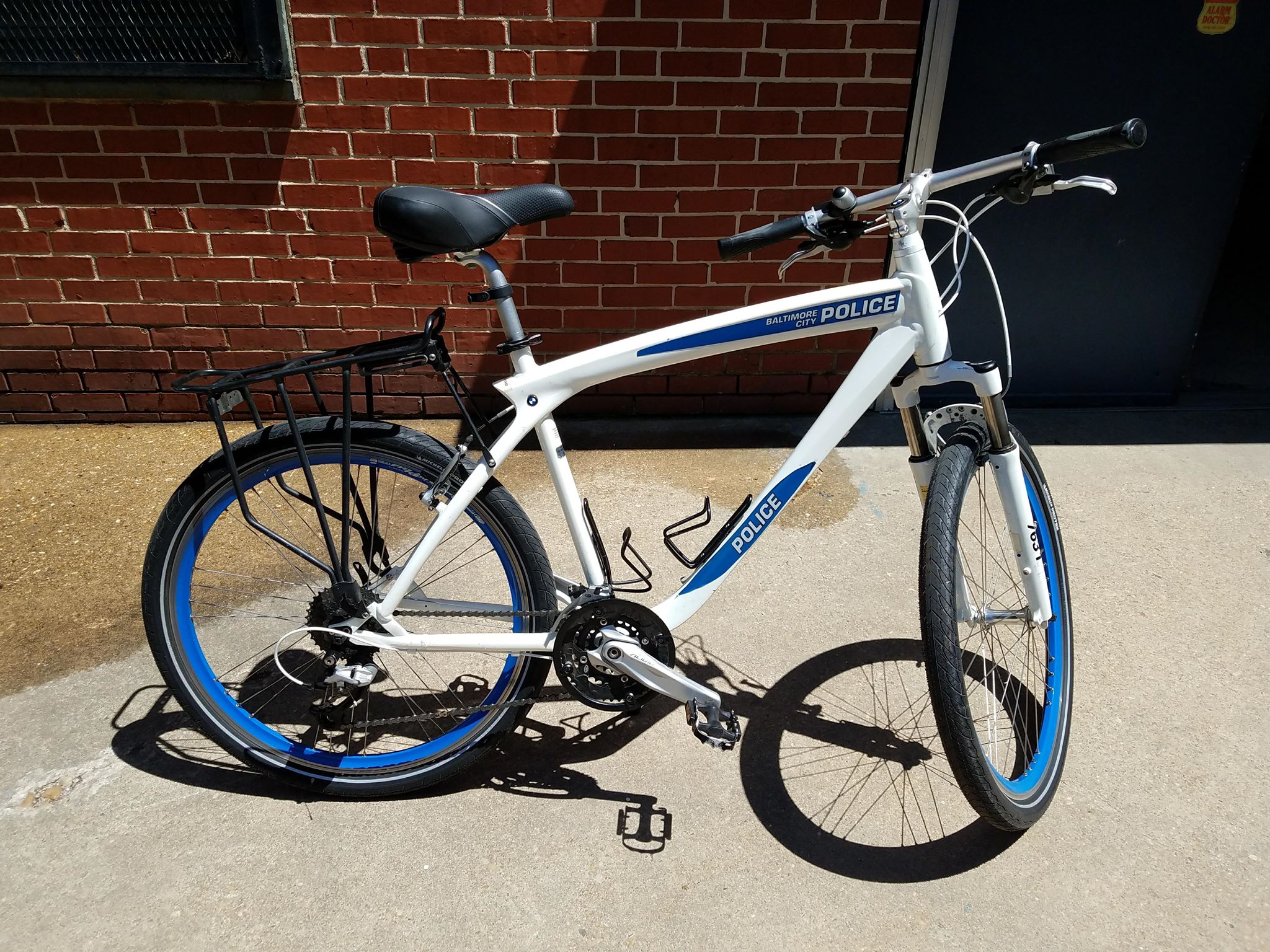
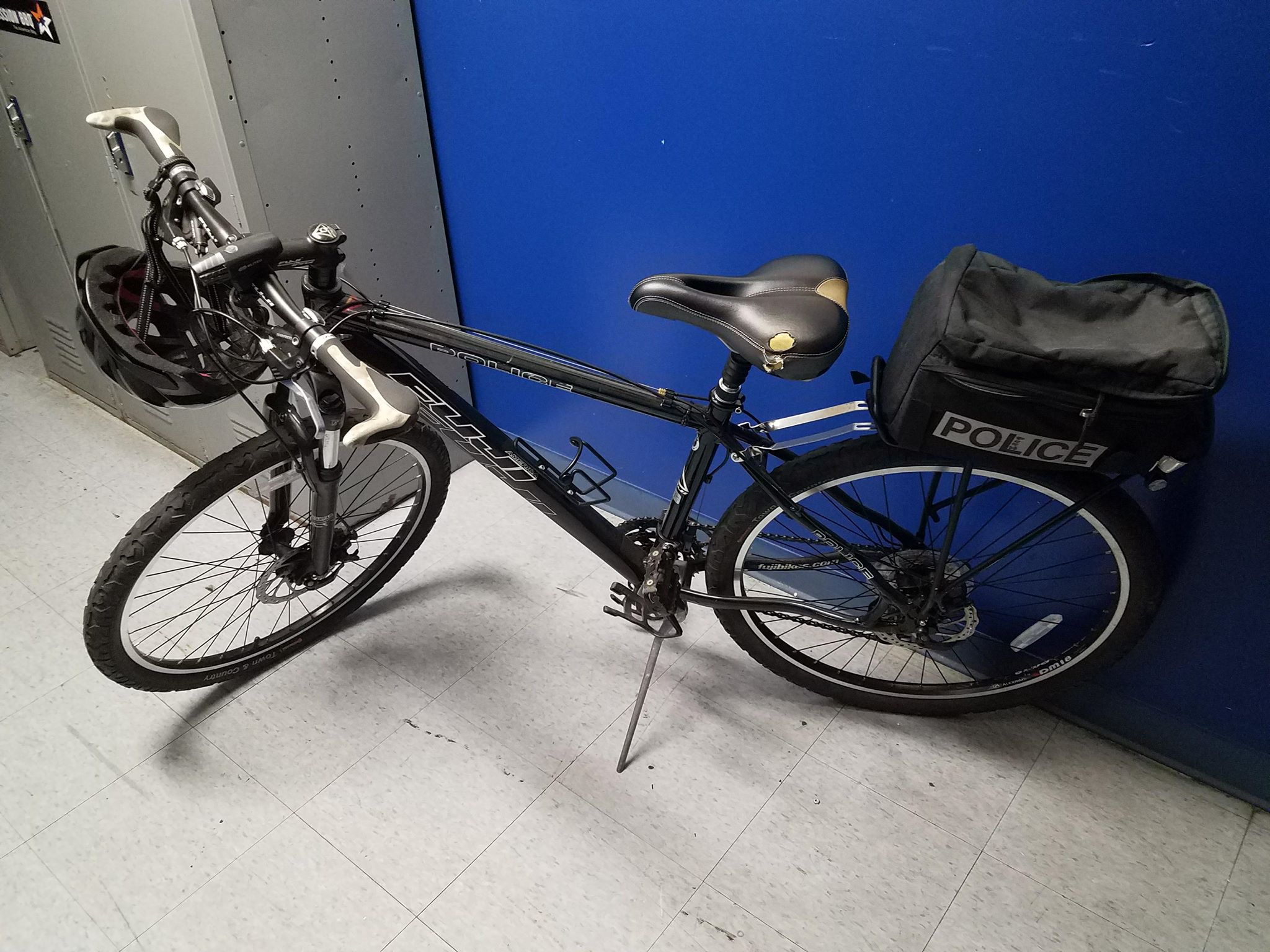
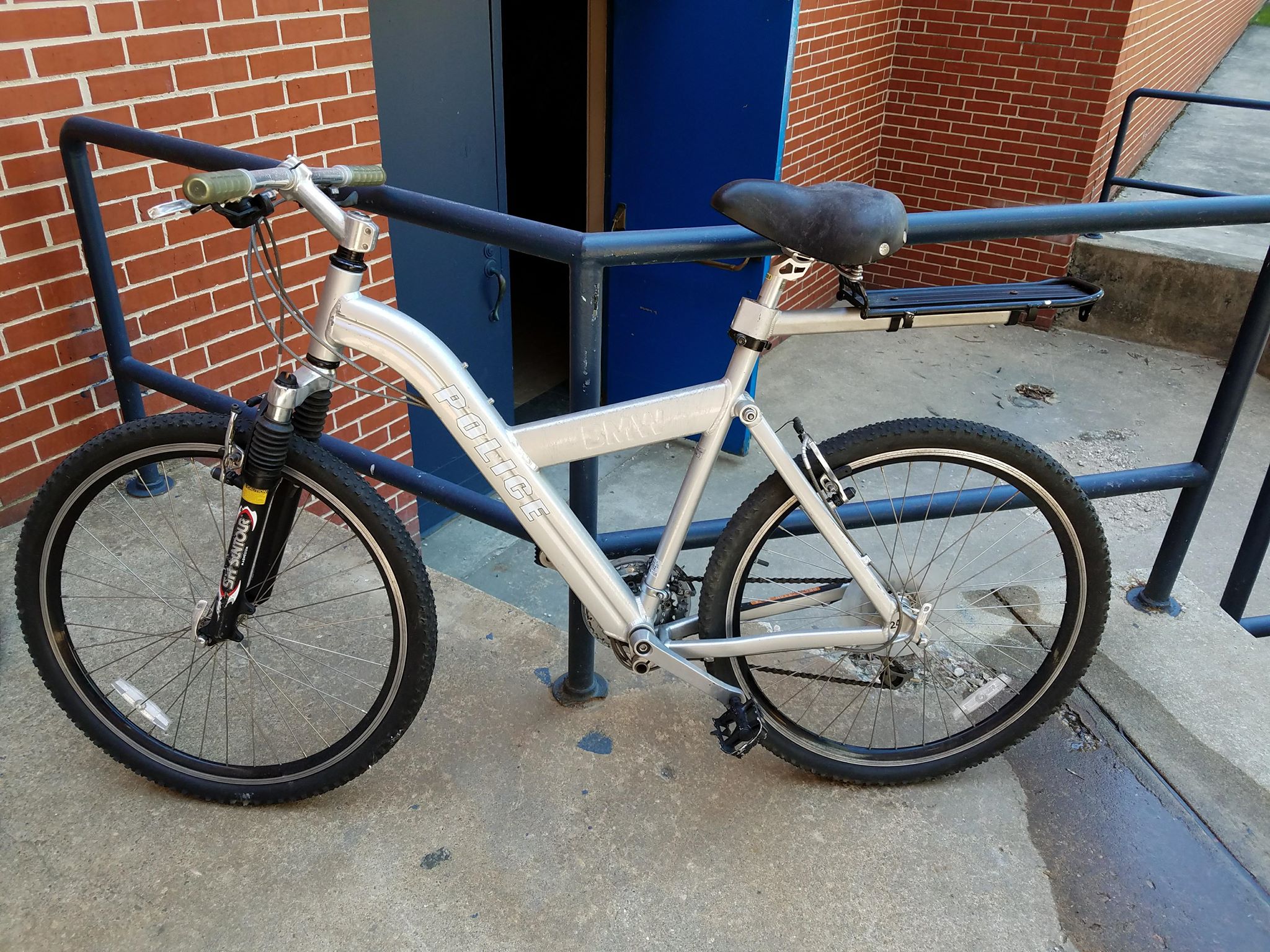
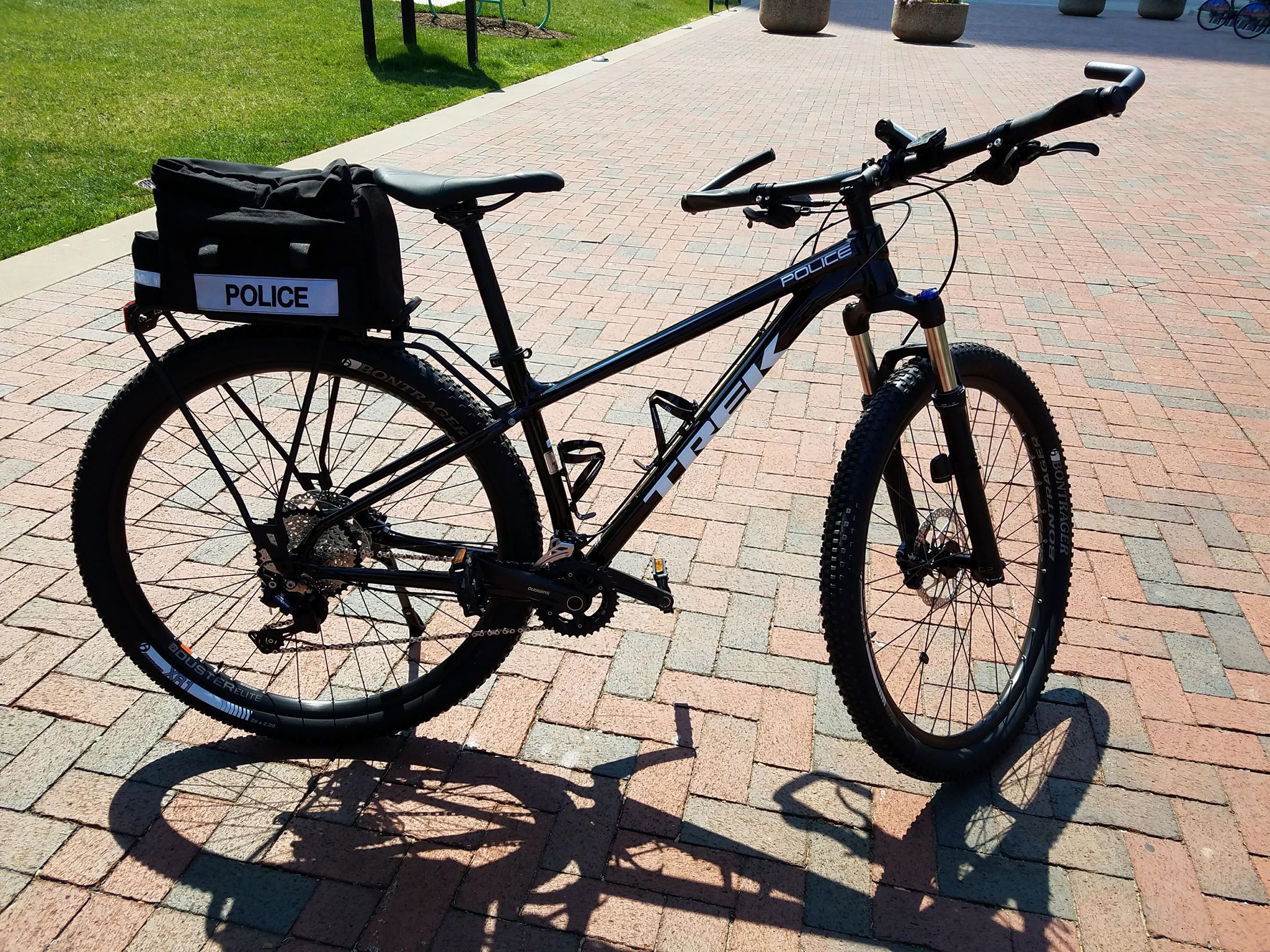
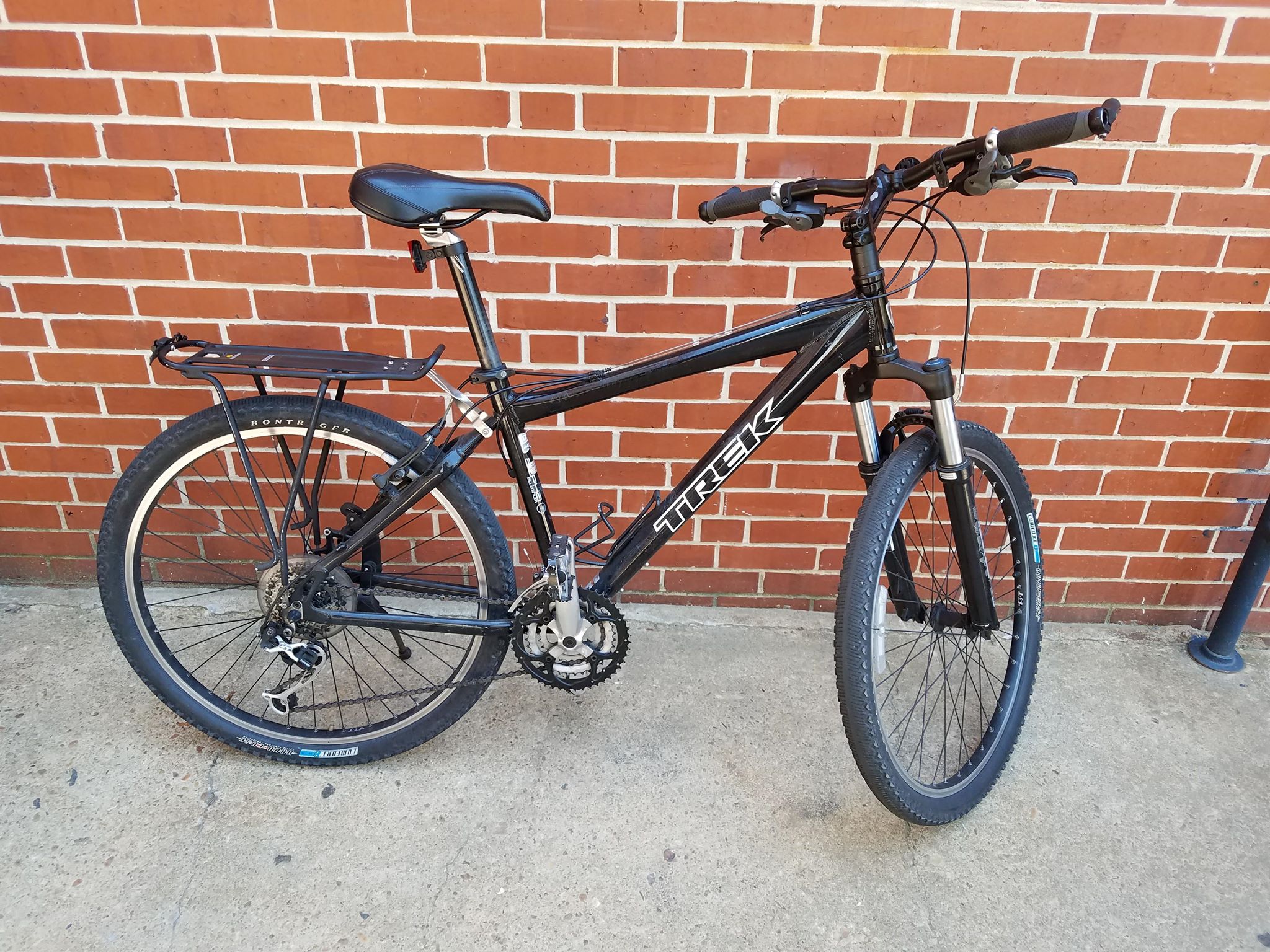
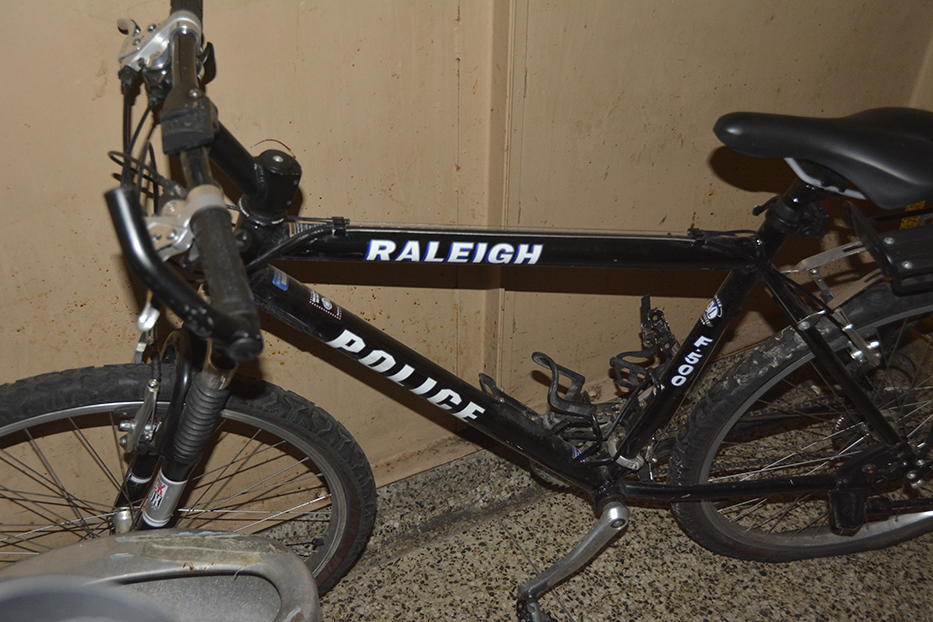

24 April 1974
As Pedaling Policeman, City's Finest Cop Out
Newspaper Reports of the Times; pg. C2
The Baltimore city police department's unique bicycle patrol which had been credited during its two-year existence with sharply cutting crime areas, it handled, has been disbanded for lack of volunteers. Insiders said many patrolmen who were overweight could not handle 10-speed bicycle with the agility of their youth. Others noted the bicycle officers were often ridiculed by fellow officers. Most of our guys tend to get a little beefy after a couple years on the force, and they found that eight hours of peddling was a lot more work than they had anticipated." Col. Frank J Serra, the chief of patrol, said. Col. Serra stated that a 200-pound man puts a lot of stress on a lightweight bike, and pointed out that two out of seven bikes in the squad were flattened beyond repair. The squad wrote its last Roundup last fall. It had been scheduled to go back on the streets the spring, but no volunteers stepped forward, he said. One reason was that the officers found it hard to stand up to the sarcastic remarks questioning the majority of those who preferred the ride bikes for a living, one source said. "Peer group pressure, plus the fact that in the summer when the temperature gets up in the 80s and 90s, they tend to work up quite a sweat and do a lot more work than they had anticipated," Col. Sierra said. The chief of patrol also noted that the trend toward smaller motorbikes had been halted because they could not hold up under the weight of a large policeman. The department has gone to larger models.

1992 – 2015
7 August 1992
Police Officers Gear Up for New Bike Patrol in North Baltimore
City police are forming a bicycle squad that will pedal through North Baltimore, and they've got plenty of volunteers for the assignment. "We've got more than enough officers who are interested. They're very excited about the bikes," said Northern District Capt. Michael Bass. "If you have a job where you can do something you enjoy, and it gives you exercise to boot, then you've got it made." The new unit, expected to hit the streets and sidewalks next month in as-yet unspecified areas, will send four officers out in pairs on rugged mountain bicycles.
Police expect the bicycle officers -- who will carry their guns in holsters strapped to their biker shorts -- will be practical in areas too large for a foot patrol officer to get around. "We think people will really warm up to it and want to see more of it. It's a good way to establish one-on-one contact," said Captain Bass, who along with Lt. Walter Tuffy has planned the unit. As is the case with a few other area police departments that are testing the concept of bicycle officers, the city police force is using the unit as a pilot program. If the public reacts well, bicycle squads could be used in other districts.
City police officers used bicycles in the Northwest District in the late 70s but discontinued their use. Now, with the resurgence of foot patrols and community policing, the bikes are making a comeback in the police world. Police in Las Vegas, Nev. and in Seattle have large squads that travel through gridlocked traffic and crowded apartment-complex parking lots. Locally, Baltimore County and Bel Air police started mountain-bike units last summer, and Anne Arundel police recently started a unit of their own. The unit in Baltimore County, which has operated in residential areas along Reisterstown and Frederick roads, as well as in Essex, will be starting a two-bike squad in Towson Monday.

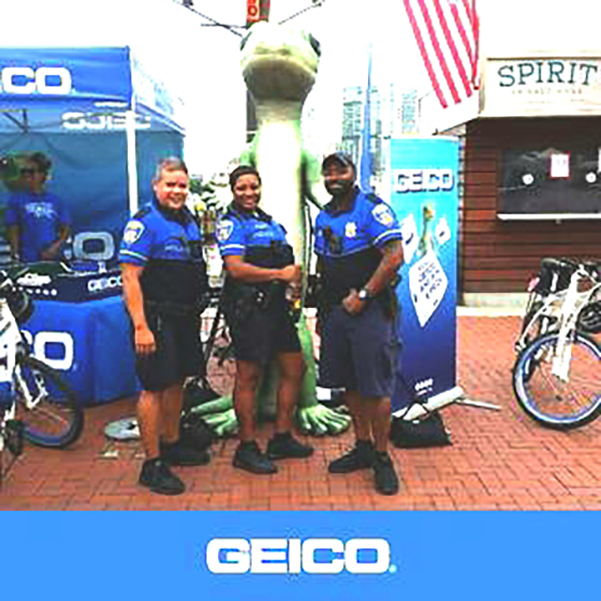
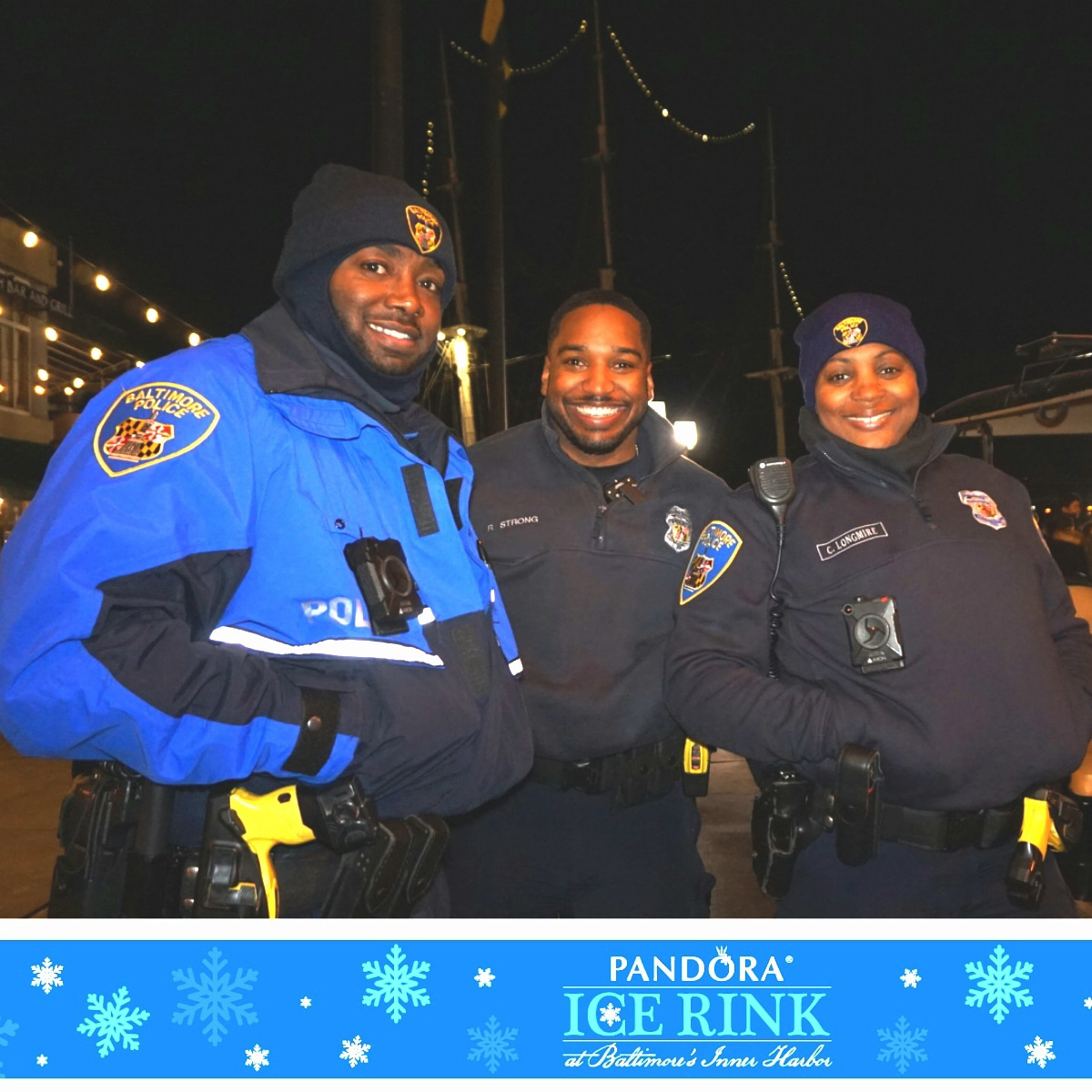



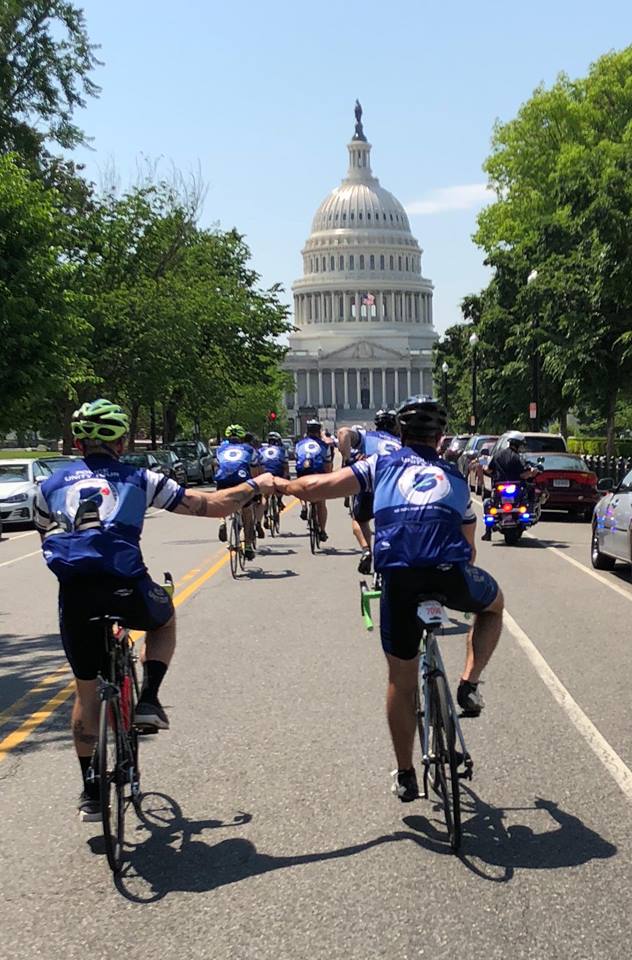
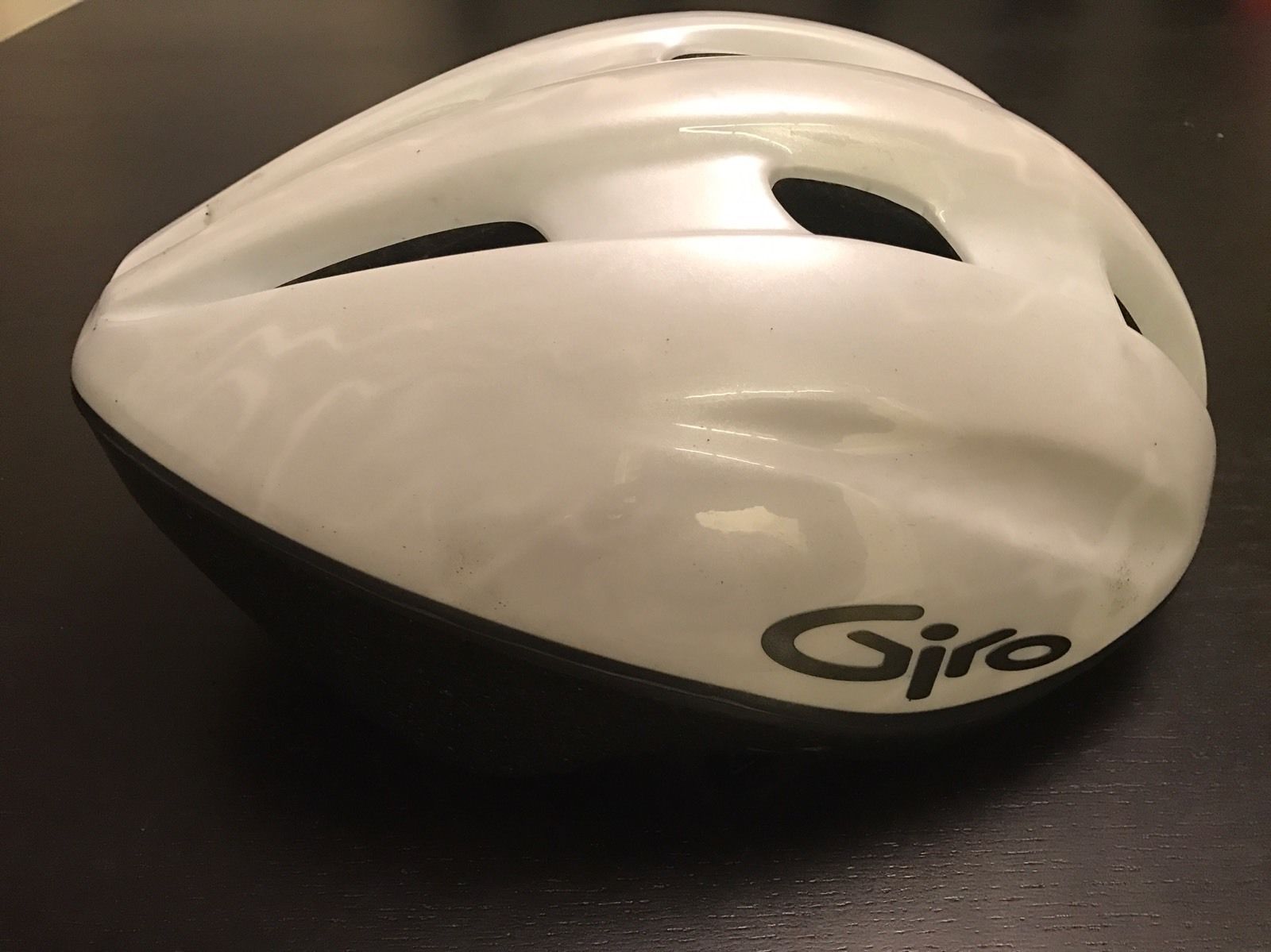
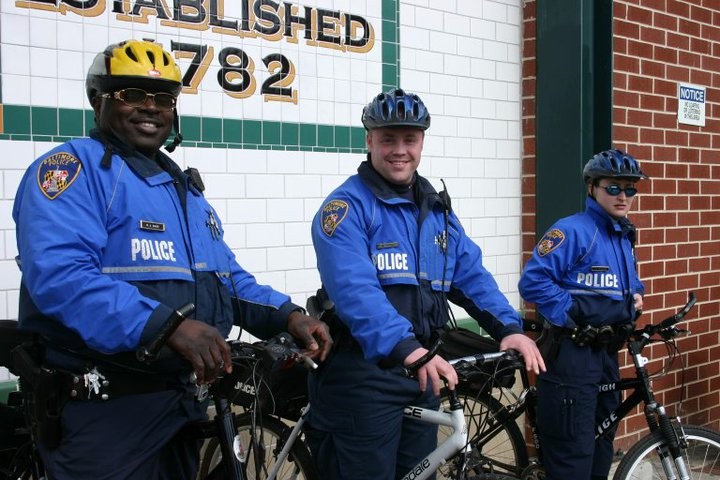

9 August 1993
City Police Officer Pushes Pedal Patrols as Making Residents Feel more Secure
"Lollipop," the children call out when Police Officer Keith Merryman patrols Baltimore's Northern District on his Canondale road bike. How'd he get the name?
"The kids called me 'Lollipop' because I used to carry, you know, that big bag of Dum-Dums with me when I was out on the beat," he said recently. "I used to give them to the kids." Back at the station, fellow officers call him "Ham" in recognition of his celebrity status as a rookie defender for the Baltimore Bays professional soccer team, which ended its season in mid-July. "He likes the attention," joked Officer Michael Fisher, Officer Merryman's partner on the bike patrol. Officer Merryman recently agreed to play another year for the Bays when the team moves indoors to the Clarence H. Du Burns Arena in Canton in November. The veteran of about three years on the police force says he's comfortable with his "double life" and that neither takes away from the other. "My superiors are pretty flexible about my schedule," he said, "and the physical condition of biking keeps me in shape for the team and the patrol." Bike patrols were instituted in October in the Northern District. Officers Merryman, Fisher, Mark Janicki and Kenny Rowell -- operating in teams of two, patrol an area roughly bounded by the county line on the north, 25th Street and North Avenue on the south, Loch Raven Boulevard and The Alameda on the east, and Pimlico Road on the west. The officers average about 20 miles per eight-hour shift. The patrols have resulted in approximately 40 arrests, according to Lt. Walter Tuffy, commander of special operations at Northern. Twenty-two of the arrests were for narcotics violations; the remainder handgun violations, burglaries and other offenses, Lieutenant Tuffy said. The program was expanded recently with nine bicycle units in the Northeastern, Northwestern and Central districts. By fall, all nine districts will have three bike patrols each -- an indication that the program has been a success, the lieutenant says. "We've received a lot of calls . . . of support for the patrols," he said. "The community perceives the officers on the bikes as more in touch to solve problems." That perception is what Officer Merryman believes is more important than the number of arrests made since the patrols began. "The fact that they know we're in the area -- out in the alleyways checking the area -- helps people feel more secure," he said. "I don't know if statistics are the right way to say if [the program] is successful or not. If the people feel more secure then that may be a better way of judging success than any statistic." Officer Merryman, who moved to Rosedale recently, said growing up in Highlandtown had a major influence on his decision to become a police officer. "We had three or four rec centers in the area . . . and they gave us kids a place to hang out at," he said. "But, I just see a lot of that not happening now. By riding in the communities, I hope I can help kids find rec centers to stay out of trouble." Officer Merryman said patrolling by bike is better than in a car because it allows personal contact with citizens, and mobility in tight spots. "When you're in a car, you just wave and leave and not show up for another hour," he said. "When you're on a bike, you have to stop and talk to people." "Plus, we're able to get down in some alleys, cut across some lots," he said. "You can't do that in a car." And, according to Officer Merryman, his nickname of "Lollipop" also helps when he's on patrol. "I think it bridged the gap between us and the kids," he said. "I think it made it easier for them to understand that we're not just there to lock up people."

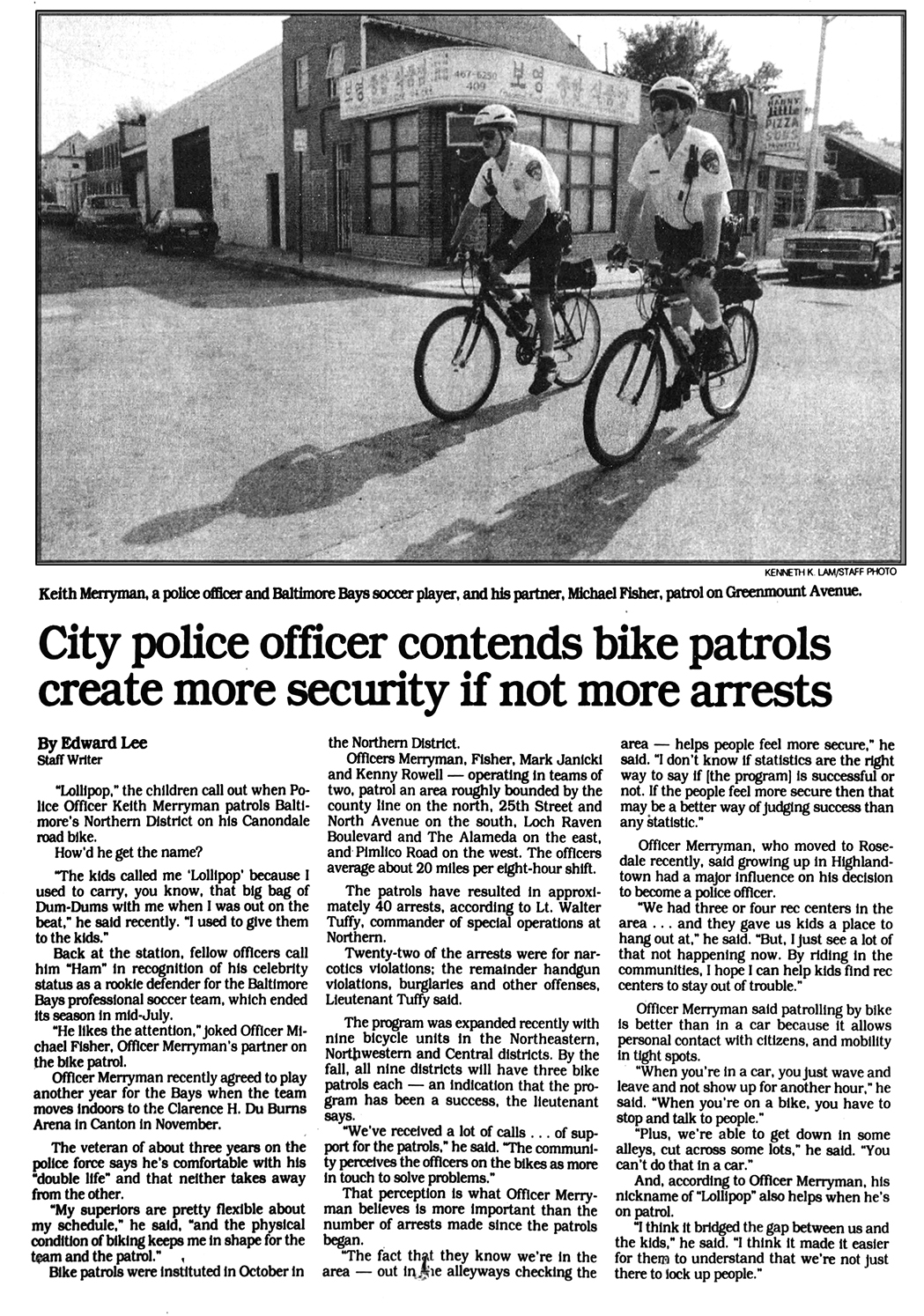
More to Come
![]()
POLICE INFORMATION
Copies of: Your Baltimore Police Department Class Photo, Pictures of our Officers, Vehicles, Equipment, Newspaper Articles relating to our department and or officers, Old Departmental Newsletters, Lookouts, Wanted Posters, and or Brochures. Information on Deceased Officers and anything that may help Preserve the History and Proud Traditions of this agency. Please contact Retired Detective Kenny Driscoll.

NOTICE
How to Dispose of Old Police Items
Please contact Det. Ret. Kenny Driscoll if you have any pictures of you or your family members and wish them remembered here on this tribute site to Honor the fine men and women who have served with Honor and Distinction at the Baltimore Police Department.
Anyone with information, photographs, memorabilia, or other "Baltimore City Police" items can contact Ret. Det. Kenny Driscoll at
Copyright © 2002 Baltimore City Police History - Ret Det Kenny Driscoll


